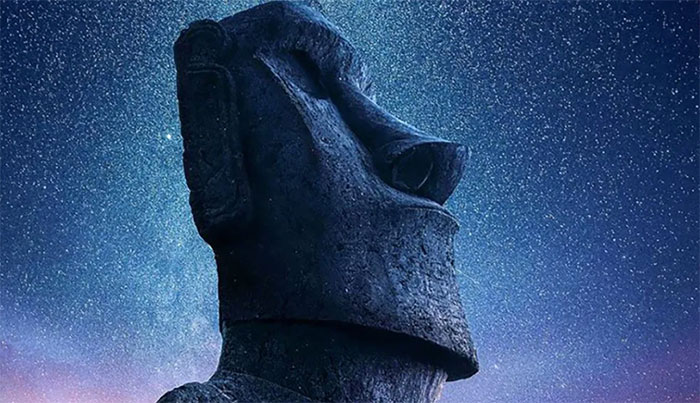The new discovery changes the understanding of the origin of the mysterious statues on Easter Island
Until recently, an international study provided new insights into what Moai could represent islanders who mined to mine and carve these giant statues.
More than 90% of Moai statues are made at a quarry called Rano Raraku - a crater where it occupies less than 1% of the island's total area, but that is the only source of stone used. to create giant rocks of the island used to sculpt.
However, Rano Raraku is not merely rock, based on analysis of soil samples collected in the area.

More than 90% of Moai statues are made at a quarry called Rano Raraku.
"There are really things that I never thought would be there, such as calcium and phosphorus ," explains geologist Sarah Sherwood from Tennessee.
According to the team, this quarry area is an industrial area used to produce and temporarily store Moai before being transported to other locations on the island.
However, nearly 400 monolithic rocks remain in the quarry, and some are buried in the ground with the support of solid rock structures showing that this location is not temporary.
"Everywhere else on the island, the soil was quickly eroded, eroded, eroded by the cultivation of plants. But in quarries, with the constant small flow of small pieces of the original rock are created. By the extraction process, there is a perfect feedback system for water, natural fertilizers and nutrients, ' Sherwood said.
In addition to evidence of soil fertility, the researchers also found traces of ancient crops in samples, including bananas, taro, sweet potato and berries.
Researchers think that in addition to using quarries to produce Moai, Easter Island residents also take advantage of the space as a place to grow the food they need, making use of the rich farmland of Rano Raraku. , which will produce higher productivity with lower labor costs.
"We make a new proposal based on these data, and based on Rano Raraku's etiquette and resources such as megalithic, Rano Raraku sediments are a valuable and protected commodity. has been shipped from Rano Raraku to enrich areas where productivity is needed , " the authors explain.
"This study completely changed the idea that all the statues in Rano Raraku were simply waiting to be transported out of the quarry. The Moai in Rano Raraku was kept to ensure the sacred nature of the quarry itself. Moai is at the center of the idea of fertility, and Rapa Nui believes that their presence here has stimulated agricultural food production, " said archaeologist Jo Anne Van Tilburg from UCLA.
- Reveal the mystery on the "rock hats" on Easter Island
- Discover the shock of the lower body of the Easter Island stone statue
- The mysterious story of ethnicity suddenly disappeared 160 years ago
- Scientists reveal new discoveries about Easter Island
- Revealing the mystery of the statue on Easter Island
- The origin and meaning of Easter
- Discover concussion about the body under the statue of Easter Island
- Mysterious bacteria on Easter Island
- How did Easter Island decline?
- Aliens have appeared on Easter Island?
- Strange statues of tens of tons?
- Anti-aging medicine under the giant statue on Easter Island
- Techniques to help the ancient people put stone caps 13 tons on top of the statue
- Detecting mysterious stone statues in China
 'Fine laughs' - Scary and painful torture in ancient times
'Fine laughs' - Scary and painful torture in ancient times The sequence of numbers 142857 of the Egyptian pyramids is known as the strangest number in the world - Why?
The sequence of numbers 142857 of the Egyptian pyramids is known as the strangest number in the world - Why? History of the iron
History of the iron What is alum?
What is alum? A 2 billion year old water sample can contain organisms
A 2 billion year old water sample can contain organisms  Stone Age 'chewing gum' reveals the life of a girl who lived 5,700 years ago
Stone Age 'chewing gum' reveals the life of a girl who lived 5,700 years ago  The pharaoh's boat for 5,000 years remains intact
The pharaoh's boat for 5,000 years remains intact  Astronauts over 70kg will not be allowed to fly to the Moon
Astronauts over 70kg will not be allowed to fly to the Moon  Shocking discovery: The amount of plastic in the ocean is over a million times larger than estimated
Shocking discovery: The amount of plastic in the ocean is over a million times larger than estimated  With just one ice pack you can immediately know if you have cardiovascular problems or not
With just one ice pack you can immediately know if you have cardiovascular problems or not 